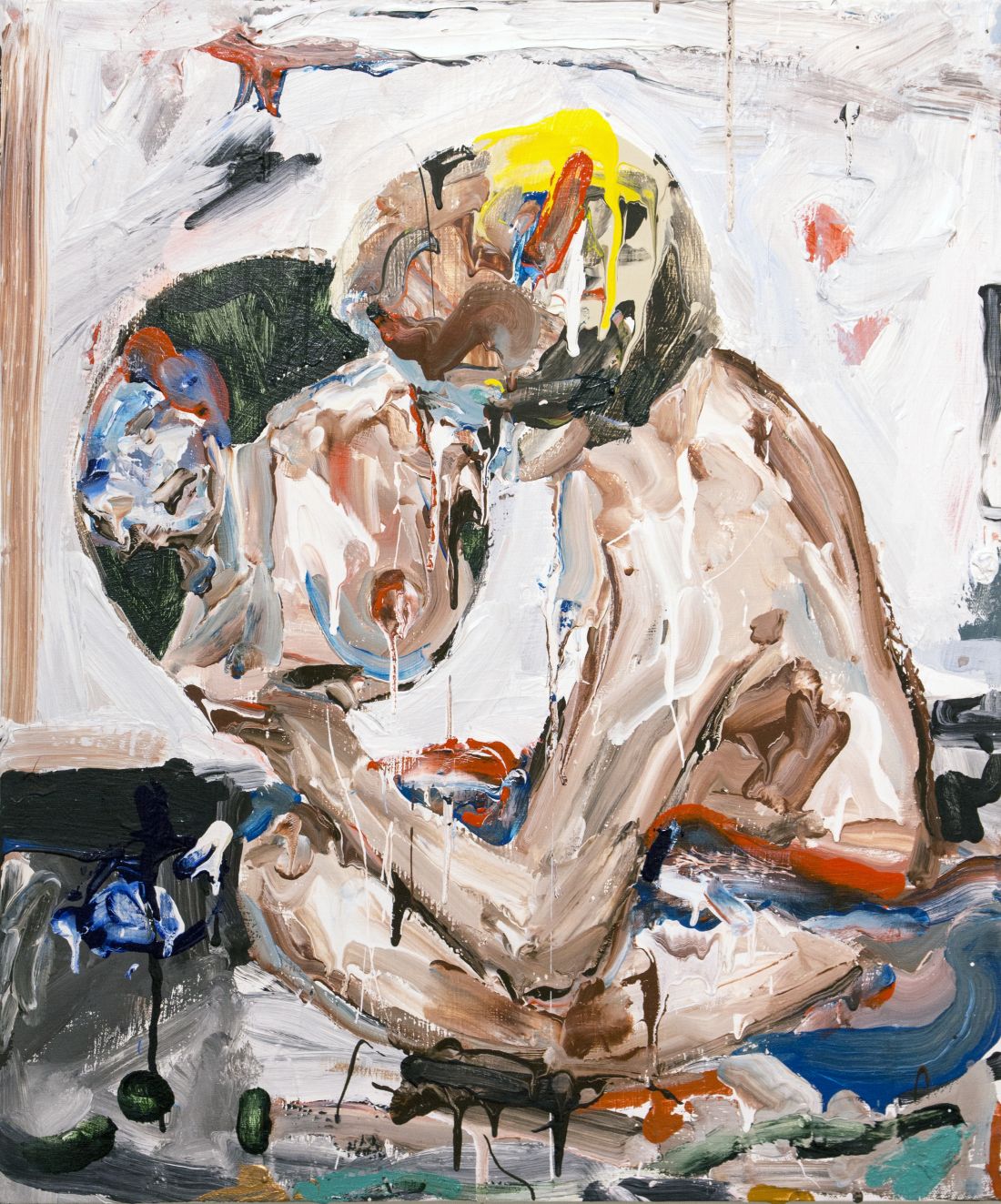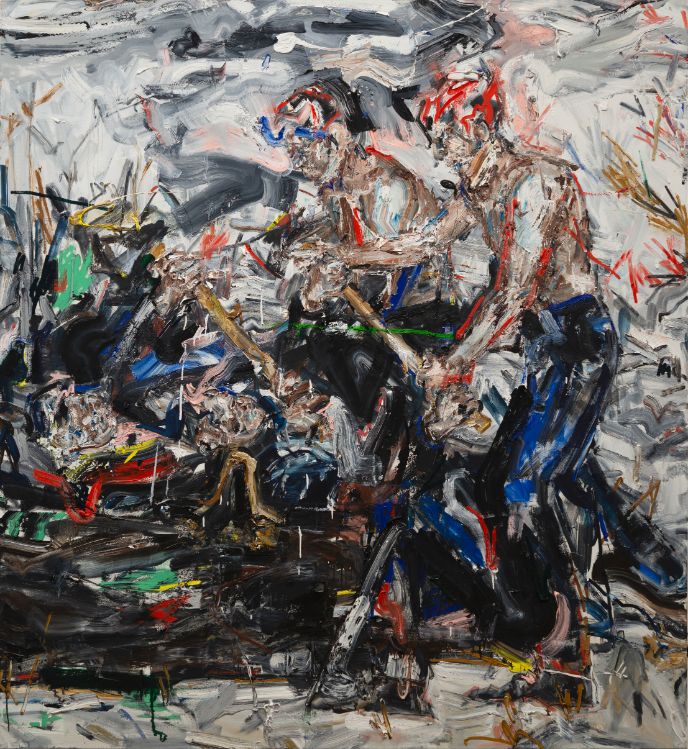
John Copeland favours the unremarkable moments within day-to-day life. Be it the hurried walk home late at night, or the lonely silence held between strangers. Within Good Morning and Gentle Conversations, Copeland explores the banality of the human condition and revitalises it with an overflowing energy and verve. Indeed, working with such simple concepts allows the artist to unreservedly inject his works with an unstoppable dynamism, elevating everyday moments into significant ones.
Copeland’s practice dances tantalisingly between figuration and abstraction, avoiding categorisation. Harking back to the earlier influential Abstract Expressionists, Copeland’s canvases are thickly layered with gestural brushstrokes, vibrating with a wild intensity. Copeland himself said that in pushing his practice toward abstraction, he attempts to ‘play with the line where things break up’. This is true for Gentle Conversations, in which figures warp and blend into the background, leaving nothing but the vague outlines of two human beings tucked beneath a flurry of paint. So too, Good Morning’s composition leaves the viewer unable to differentiate between feverishly applied brushstrokes, objects, or body parts.
When considering Gentle Conversations and Good Morning, it is important to take into account the titles of the pieces as well as their artistic content. In naming his piece Gentle Conversations, yet depicting an image that emanates with hostility, Copeland creates a dichotomy between title and content. Certainly, the conversation held between the two figures is decidedly not gentle. Overset with heavy black undertones and frenzied red marks that have been applied onto the canvas with impressive stamina, the overwhelming emotion of the piece is one of anger. More so, does Good Morning really depict what its title suggests? The semi-nude figure crouching on the floor does not seem to glance into the mirror with a gleeful exclamation of ‘good morning!’. In fact, the piece exposes something darker, a moment of human suffering. Instead, the figure appears broken down, peering at their own reflection in desperation.
By creating juxtapositions between titles and artistic content, Copeland strategically engages with the liminal space between good and bad moments. Thus, his paintings simultaneously represent both the positive and negative aspects of everyday life. Indeed, in our lifetimes we have all encountered mornings both good and bad, and held conversations both gentle and irate. Through this binary, Copeland opens interpretation to his viewers. When considering Good Morning or Gentle Conversations, one is able to side with the experience that resonates with them most, be it the good or the bad. This choice of interpretation is a powerful one, and in tandem with the artist, the viewer is granted the luxury of imbuing the work with personal meaning.
In his depictions of everyday moments, Copeland transforms the mundane into the extraordinary, and presents his work with intricate double meanings. His practice strikes a delicate balance between relatability and mystery, one that is achieved through the weaving of figuration and abstraction
(By Eleanor Lerman)
